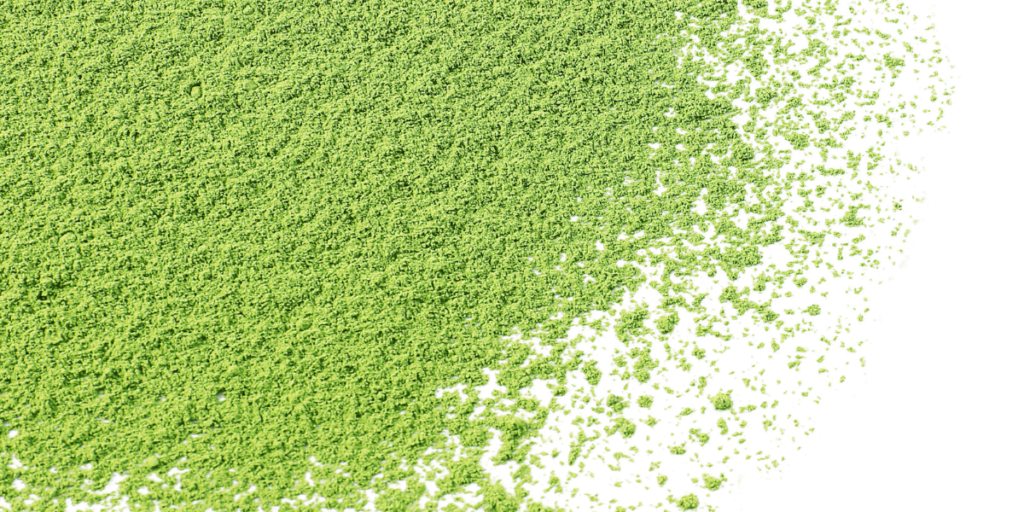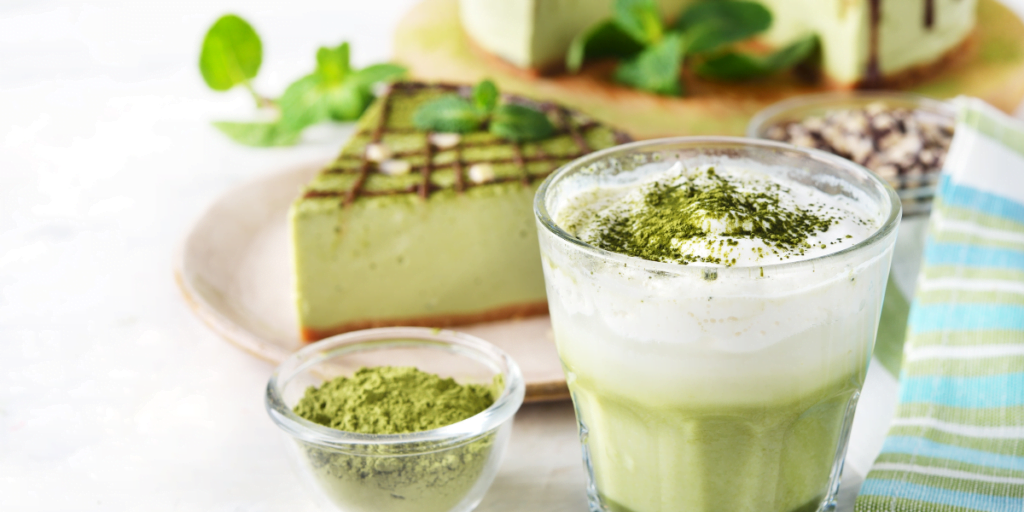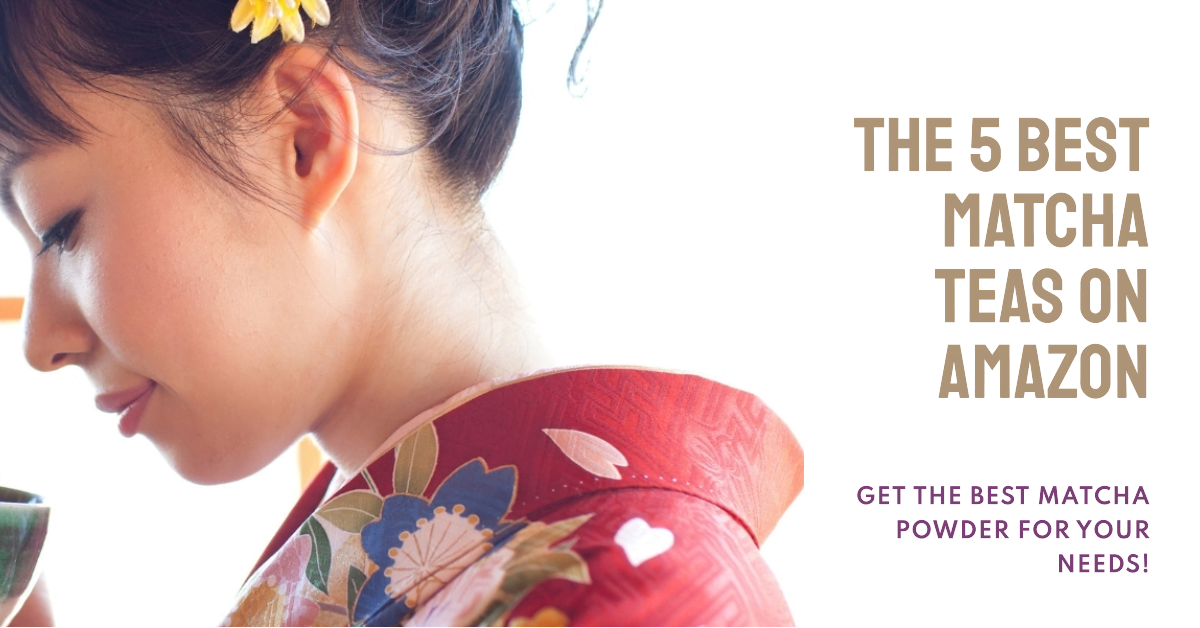What is Matcha Tea?
Do you love the taste of green tea but are looking for something even more special? If so, matcha tea is a perfect choice! Matcha is a type of green tea that has been gaining popularity recently due to its powerful health benefits and unique flavor.
So, what exactly is matcha? Matcha is a Japanese green tea powder made from whole Camellia sinensis leaves that have been ground into a fine powder. It has an antioxidant content higher than traditional green teas, and its flavor can be described as fresh, vegetal, and slightly sweet. Matcha originates from Japan and has been used in traditional ceremonies such as the Japanese Tea Ceremony for centuries.

Regarding types of matcha, there are two main categories – ceremonial grade and culinary grade. Ceremonial-grade matcha is grown specifically for use in traditional Japanese Tea Ceremonies. Its bright green color, intense umami flavor, and smooth texture make it ideal for this purpose. Culinary-grade matchas are less expensive than ceremonial grades but still offer great quality. They can be added to recipes or enjoyed as an everyday drink like regular tea or coffee.
Brewing up the perfect cup of matcha requires specific tools, such as a fine mesh sieve (to sift out any lumps), chasen (bamboo whisk), and chawan (tea bowl). Once these items are ready, follow these steps:
- Sift two teaspoons of powdered matcha into your chawan.
- Heat one cup of water until just boiling.
- Pour hot water into your bowl with the matcha.
- Whisk vigorously until frothy.
- Enjoy your delicious cup! You can also add milk or sugar if desired, creating an even tastier beverage called “Matcha Latte.”
Besides drinking it, you can enjoy matcha in other ways too! Add some to smoothies or yogurt for added nutrition, or use them when baking muffins or cookies instead of regular flour – either way, you’ll get all those fantastic antioxidant benefits plus an extra boost of energy! There’s no limit to how much creativity you can bring by incorporating this healthy tea into your meals! So why not give it a try today?

Organic Matcha from Japan
Organic matcha tea powder, originating from Japan, has gained immense popularity in recent years. This versatile ingredient can be used to make a delicious matcha latte or smoothie or simply consumed on its own.
Organic matcha offers exceptional health benefits because of its antioxidant-rich properties. It can boost immunity and energy levels, improve digestion, and aid in weight loss. In addition, Japanese organic matchas are of high quality and purity compared to non-organic options that may contain harmful chemicals or pesticides.
Some popular brands of organic Japanese matchas include Honjien Organic Matcha Japanese Green Tea Powder Gold Grade, Encha Ceremonial Organic Grade Matcha sourced from Uji Japan, and Jade Leaf Matcha made with Japanese-grown leaves.
When choosing between ceremonial-grade and culinary-grade matcha teas, consider your intended use. Ceremonial-grade teas are made from the youngest buds picked during the season and offer a sweeter flavor profile, recommended for drinking alone. Culinary-grade teas are made from slightly older leaves and are suitable for recipes or beverages like lattes or smoothies.
When preparing matcha tea, avoid overheating the water, as it will make the delicate flavor profile bitter. The ideal temperature is 160°F – 185°F, depending on the preferred strength of the brew. Use 1-2 teaspoonsful of sifted powder and whisk vigorously until frothy.
Organic matcha is in high demand, especially in Western countries, due to its natural ingredients and superior taste experience. So, treat yourself to some organic Japanese matcha and enjoy its refreshingly delicious taste!

Ceremonial Vs Culinary Grade Matcha
With so many types of matcha available, deciding which one to choose can take time. In this section, we’ll explain the differences between ceremonial-grade and culinary-grade matcha, allowing you to choose when shopping for organic matcha.
There are two primary grades of Japanese matcha: ceremonial grade and culinary grade.
Ceremonial grade, while typically more expensive than culinary grade, offers a more profound and richer flavor profile thanks to its finer grind and higher antioxidant content. Ceremonial grade is best suited to making traditional Japanese tea as it doesn’t tend to lose its flavor when subjected to high temperatures. However, it may not work well in other recipes, such as smoothies or lattes, where different ingredients could overpower its flavors.
Culinary-grade matcha is less expensive but still provides a quality product with enough antioxidants and nutrients for those seeking healthy tea options without breaking the bank.
There are five varieties of Culinary Grade Matcha: premium, cafe, classic, ingredient, and kitchen, each with its unique flavor profile, ranging from bright green shades (premium) to dark green (kitchen). This makes it easier for anyone searching for specific flavors or colors when creating various recipes with their favorite organic Matchas!
Whether you prefer ceremonial or culinary-grade matcha, both offer benefits. Ceremonial Grade Matchas are ideal if you want intense flavor profiles. Still, Culinary Grade Matcha offers excellent value at lower prices, providing everyone access to antioxidant-rich teas without breaking the bank.
So why not try different types of Matchas today and create your favorite recipe – a simple cup of hot Japanese tea or something more complex like a delicious latte or smoothie!
The key to getting the perfect cup every time lies in finding the right balance between water temperature (80°C) and the time spent stirring (30 seconds). You also want to ensure that all your supplies (i.e., whisk) are clean before starting to not create an overly bitter taste due to residue built up on them over time. Lastly, don’t forget about adding some sweetener, such as honey or simple syrup, if desired – it helps bring out even more flavor in your cup
Health Benefits of Organic Matcha Tea Powder
Matcha tea powder is a green tea powder made from finely ground, shade-grown Japanese green tea leaves. This antioxidant-rich tea has been traditionally used in Japanese culture for centuries. From ceremonial to culinary grade, several varieties of matcha are available on the market today.
When understanding the different varieties of matcha, it’s important to know how much shade coverage is used in its cultivation process.
Ceremonial-grade Matcha is grown under complete shade for three weeks before harvesting. It typically has a more vibrant green color than other types of matcha due to its higher chlorophyll content. On the other hand,
Culinary-grade Matcha is grown under partial shade and typically has a less vibrant color but still offers many nutritional benefits compared to untreated green teas.
Organic matcha, in particular, contains powerful antioxidants that have been proven to help protect against cancer and cardiovascular diseases, boost metabolism, aid in weight loss, reduce stress levels, improve cognitive function, and provide anti-inflammatory properties throughout your body – 137 times more antioxidants than other types of green tea!
Furthermore, matcha provides more nutritional value than traditional teas because you consume the whole leaf instead of just steeping them in water like regular teas, meaning you get more nutritional bang for your buck!
Matcha can be enjoyed in many forms – from hot or cold beverages such as lattes or smoothies to baking cakes or cookies, using it for cooking sauces or marinating meats, making ice cream, or even adding it to your morning oatmeal.
There are endless possibilities when experimenting with this delicious antioxidant powerhouse – so why not try organic matcha and discover something new?

Bottom Line
Thanks to its centuries-old antioxidant-rich benefits, Matcha tea has become a popular choice among tea lovers worldwide.
Whether you prefer ceremonial-grade or culinary-grade matcha, both offer unique health benefits that please any palate. So why not try organic Japanese matcha today and enjoy its refreshingly delicious taste!
FAQs
Are there different types of matcha tea?
Yes, there are different types of matcha tea, primarily categorized by quality, flavor, and intended use.
What are the 4 types of matcha?
The main types of matcha are ceremonial grade, premium grade, culinary grade, and ingredient grade. Ceremonial grade is the highest quality, while ingredient grade is the lowest, typically used in recipes and beverages.
What type of matcha is sweet?
Matcha itself is not sweet, but some matcha blends contain added sweeteners, such as sugar or stevia, for a sweeter taste. Culinary and ingredient-grade matcha may also have a less bitter flavor, making them seem sweeter.
What type of matcha is best for drinking?
Ceremonial grade matcha is considered the best for drinking, as it is the highest quality, with a vibrant green color, smooth texture, and rich flavor. It is ideal for traditional Japanese tea ceremonies and sipping plain.
Sources:
- Article: “Beneficial effects of green tea: A literature review” Source: Chinese Medicine, a peer-reviewed journal published by BioMed Central Link: https://cmjournal.biomedcentral.com/articles/10.1186/1749-8546-5-13
- Article: “Effects of green tea catechins with or without caffeine on glycemic control in adults: a meta-analysis of randomized controlled trials” Source: The American Journal of Clinical Nutrition, a peer-reviewed journal published by the American Society for Nutrition Link: https://academic.oup.com/ajcn/article/97/4/750/4577025
- Article: “The neuroprotective effects of L-theanine: a systematic review” Source: Journal of Functional Foods, a peer-reviewed journal published by Elsevier Link: https://www.sciencedirect.com/science/article/abs/pii/S175646462030612X
- Article: “Green Tea Catechins: Their Use in Treating and Preventing Infectious Diseases” Source: BioMed Research International, a peer-reviewed journal published by Hindawi Link: https://www.hindawi.com/journals/bmri/2018/9105261/
- Article: “Theanine, r-glutamylethylamide, increases neurotransmission concentrations and neurotrophin mRNA levels in the brain during lactation” Source: Life Sciences, a peer-reviewed journal published by Elsevier Link: https://www.sciencedirect.com/science/article/pii/S0024320504004923
- About the Author
- Latest Posts








